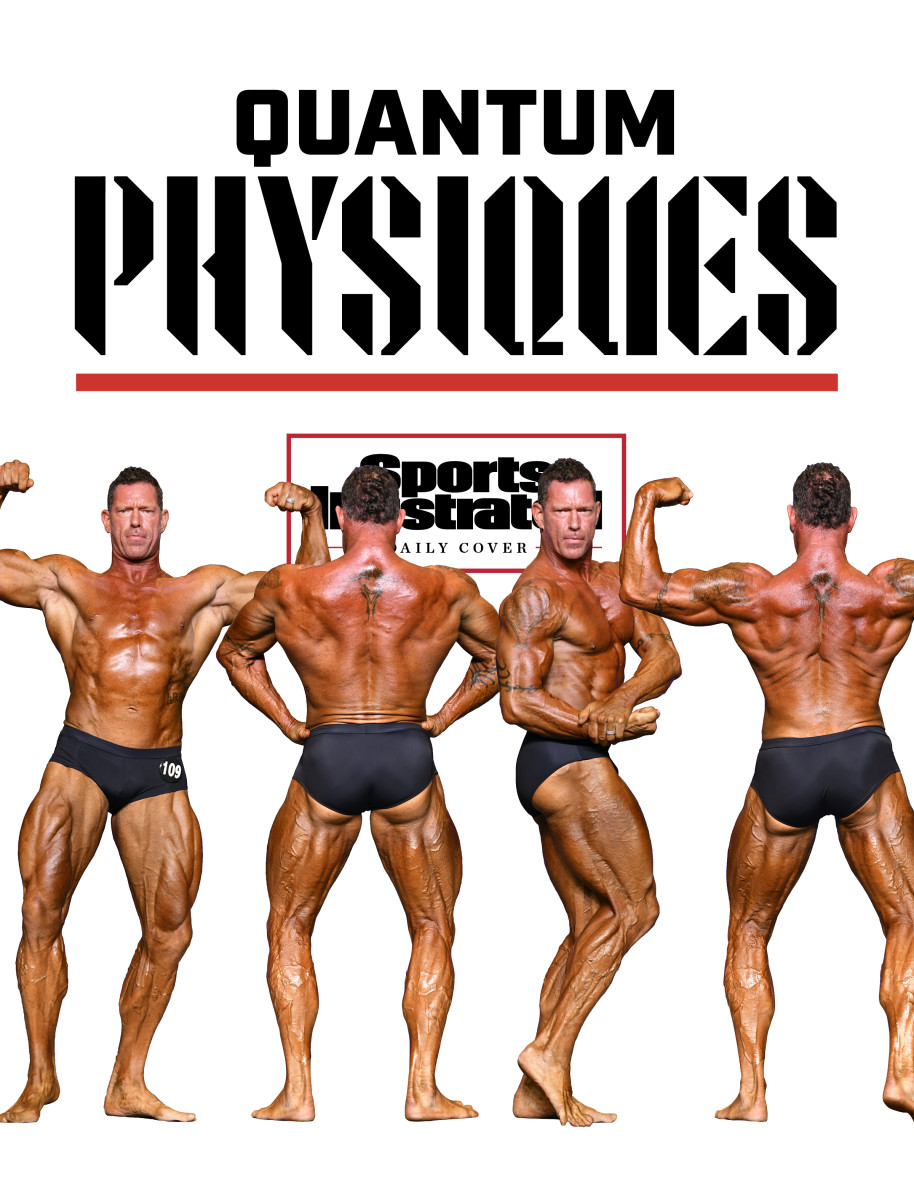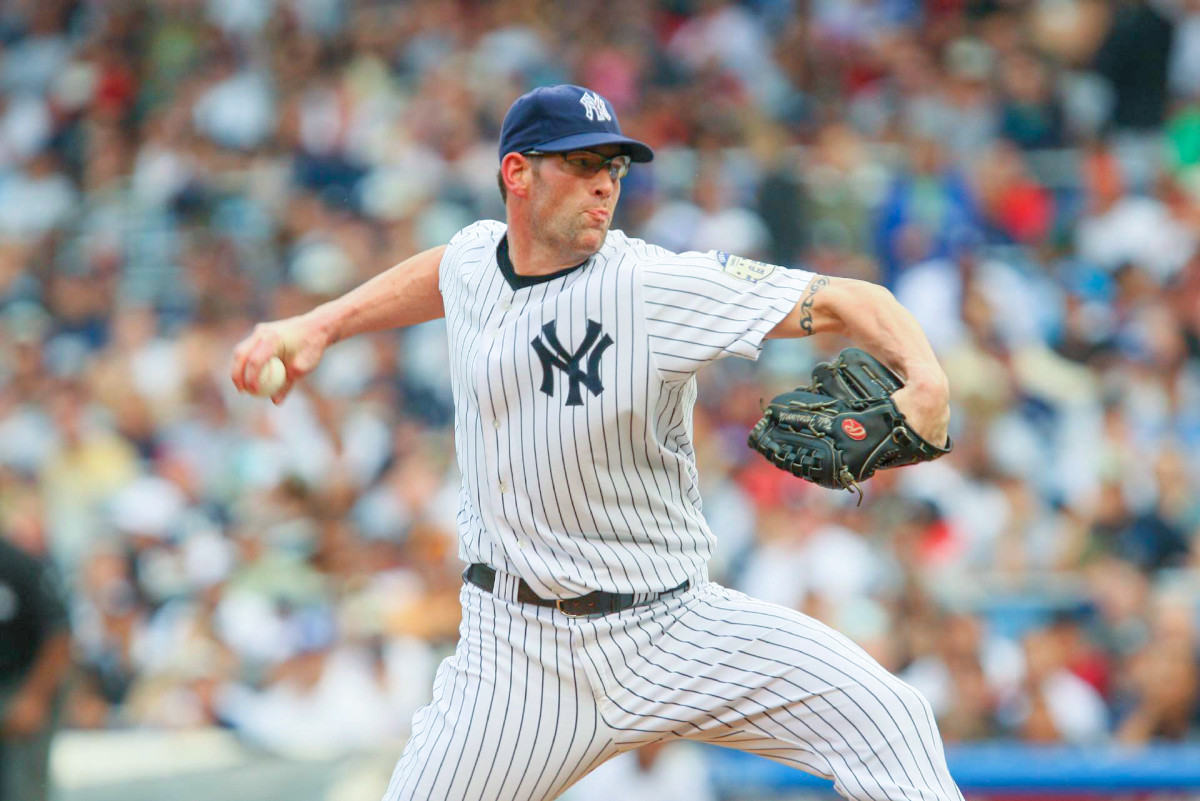Kyle Farnsworth’s Next Big Thing: Spray Tans and Squats—and Absolutely No Oreos

Strength comes in many forms and has many sources. But what does it mean to be strong? We have a few ideas. Check back throughout the week for more.
The worst part about bodybuilding, Kyle Farnsworth says, is how appealing Oreos look when you’re not allowed to eat them. By the time Farnsworth took the stage in Orlando last month for the National Physique Committee Southern USA Championships, he was about ready to withdraw and Double Stuf his face. But after 16 years as a major league reliever, playing for nine teams, including, notably, the Cubs and Yankees, he knows something about patience. So he strode out into the spotlight … and found its glow familiar.
“Everybody’s looking at you,” he says. “You’re all by yourself. The only difference is: In baseball, you have your uniform. In bodybuilding, you’re in your underwear.”
Or posing shorts, to use the vernacular. A bodybuilding event in some ways resembles an extremely muscular dog show: Competitors—men dressed in regulation black shorts with bare chests, and women in bikinis—hold five mandatory poses as a group, then again individually. Judges assess whose figure comes closest to an aesthetic ideal.

Farnsworth, 46, knew all this in theory, but when he took the stage on June 25 it marked his first competition. “I honestly didn’t know what to expect,” he says. “I just didn’t want to make a fool of myself.”
In the days leading up to the event, he told his friend and trainer, Ivan Torres, that he was nervous about being on display “in a Speedo.” Torres laughed. “That’s gonna be the last thing on your mind,” he said. “You’re gonna be so hungry, you’re just gonna do your poses and get it over with.”
So Farnsworth got a spray tan and registered on Friday, then arrived at the event at 7 a.m. on Saturday for a 9 a.m. start. The first round of judging took about three hours, then he returned at 4 p.m. for the finals and the awards ceremony, where he cleaned up. Farnsworth placed first in all three categories he entered: men’s classic physique novice (for anyone who hasn’t previously won an event), men’s classic physique class D (over 6'0" tall) and men’s classic physique masters (ages 35 and up). He celebrated with ribs, fries and margaritas.
Under normal circumstances, Farnsworth says, “I guarantee no one would have known who I was.” But these were not normal circumstances, and everywhere he went he seemed to draw attention.
Four days before the event, Farnsworth had tweeted a photo of his shredded frame, clad in only a pair of gray athletic shorts that barely contained his massive thighs. “Very rare gym bathroom selfie,” he wrote, adding, among other hashtags, #pitcherswholift.
Very rare gym bathroom selfie. 4 days out to my first body building competition. Classic Physique. These past few days have been fun with no carbs! #classicphysique #bodybuilding #pitcherswholift #npc #southernnational #hardwork #tats #sheruclassic pic.twitter.com/TS1fcdzTC4
— Kyle Farnsworth (@24_7Farnsworth) June 21, 2022
The picture blew up even more than the pitcher had. “Kyle Farnsworth is absolutely jacked now,” proclaimed MLB.com. The New York Post called him “unrecognizable.” Seemingly every person on Twitter made a joke about Paul Wilson, the Reds pitcher whom in 2003 Farnsworth lifted off his feet and, almost casually, slammed to the ground in a bench-clearing brawl.
The response caught Farnsworth off guard. “I don’t understand what was so intriguing about this photo; I’ve always been in good condition,” he says. “Even playing baseball, we’d get our body fat down, and I’d always be either the lowest or the top five in the minor leagues. So to me, it was no shock. [Understanding] nutrition better, eating right, doing more cardio … definitely helped. People are gonna [suspect] other things, but diet and the way you treat your body and exercise and stuff like that—you’d be very surprised, if you stick with a program, what it can do.”
He adds that his body fat on the day of the competition, which he estimates to have been around 7%, was perhaps twice as high as his body fat when he played baseball. (He more than made up for that with added muscle. During his playing days he was listed around 230 pounds; he competed last month at 245 and he was back up to 260 within a few days of the event.)
As for those “other things,” when it is pointed out to Farnsworth that he might have picked the only sport more saturated with steroids than the era of major league baseball in which he played, he demurs. “That’s none of my business,” he says. “If guys want to do that, that’s up to them.” (Farnsworth was never linked to performance-enhancing drugs during his baseball career.)

Read More From SI’s Strength Issue
He credits his figure to two or so hours per day of lifting, five days a week, and a strict diet. Two years ago, on his 44th birthday, he squatted 225 pounds 44 times. His personal record for one repetition is 545 pounds. The upshot of which is: He long ago left behind his civilian duds. “I have two or three outfits that I can wear that fit fine, but mainly I just have tons of gym clothes,” he says.
Farnsworth started to take weightlifting more seriously after he retired from baseball, in 2015 (following a year in the Mexican League). He was used to being in the gym all the time, so why not give himself a goal?
“He’s a big guy,” says Torres. “He just needed to follow a diet and intensify his cardio, and eventually his body got shredded.”
Says Farnsworth: “In anatomy class, you know how there’s a skeleton picture and then they have the muscle picture? That’s what it reminds me of. It’s definitely not healthy to stay that way for that long. But it is a pretty cool change from month three to the day before the competition, when you drop all that weight. You see the hard work in your muscles, the striations and the cuts and the definition, as opposed to being loaded with water. It’s a neat transition.”
This is not Farnsworth’s first seemingly abrupt foray into another sport. In June 2014, after the Astros released him, he decided to act on an old dream and play football. He had not worn pads since his 1990 freshman year at Milton High, in Alpharetta, Ga., but he made the semipro Orlando Phantoms at defensive end. And while he tried to participate incognito, word eventually got out, so he grew a “big freaking beard,” says Michael Torres, the team’s owner and coach. Over five seasons, the bewhiskered man teammates called Big Grizzly made two All-Star teams and won two championships. He also suffered a blown-out shoulder and a blown-out knee.
After the latter, sustained while he was chasing down a running back, Farnsworth looked up at Torres. “I guess I’m not going to play the rest of the season, huh?” he asked. “I guess I’ll start training for next year.” At which teammates rolled their eyes—the defensive end was already over 40. But there he was again the following August, ready to go.

“I just don’t want to look back on my life and say, I wish I would have done this; I wish I would have done that,” he says.
Farnsworth has not ruled out a return to football, but he’s already thinking about hanging up his posing shorts. “I doubt I’ll do another one,” he says. “I want to stay batting 1.000. Three-for-three’s good enough.” Plus, he adds, his family might kill him: Starting 10 days out from the competition, he began eliminating carbohydrates from his diet, which subsequently eliminated most of his social graces. “You can get very grumpy for no reason,” he says. He loves his wife, Maria, and he wants to stay married to her.
He also loves those Oreos. And with his Arnold Schwarzenegger days behind him, he likes to joke that he has a new role model: Mike Myers’s 2,200-pound henchman character from the Austin Powers movies, Fat Bastard.
• The Unbreakable Bond of Stefon and Trevon Diggs
• Who’s Still Got Milk?
• The Reinvention of the World’s Heaviest Sumo Wrestler
• ‘Oh, You Look Like the Rock’: Finding Rocky’s Family
